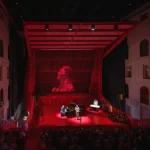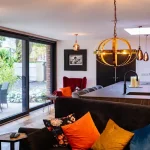Wexford Opera House Ireland, Arts Building Images, Southern Irish Architecture Design Project
Wexford Festival Opera House
Irish Arts Building: Wexford Festival Opera Development – design by OPW + KWA
12 Sep 2008
The New Wexford Opera House
Design: Office of Public Works Architects with Keith Williams Architects
BACKGROUND
Wexford Festival Opera has been running since 1951, playing a central role in the cultural life of Ireland, and in the world of Opera and Arts internationally.
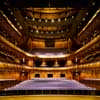
Wexford Opera House Photo : Ros Kavanagh
The rebuilding of Wexford Opera House, is one of Ireland’s most important cultural projects of recent times, and has been completed on schedule for the 2008 autumn opera festival.
In a far reaching €33 million building programme to designs by the Office of Public Works Architects with Keith Williams Architects, a totally new opera house has been constructed in the town centre on the site of the old Theatre Royal, the former home of the world famous opera festival.
The purpose-designed Wexford Opera House contains two theatres of differing scales. The principal auditorium accommodates 780 seats, whilst a new adaptable auditorium of 175 seats provides for performance in a variety of formats.
Facilities in the new 7,500sqm theatre will include:
A 780 seat state-of-the-art auditorium specifically designed for opera
A 175 seat second space for drama, music, and rehearsal
Main stage, orchestra pit, flytower and back stage
Foyers/box office/cloaks/bars and cafe /wcs
Hospitality Areas
Backstage facilities for directors, conductors, designers and singers
Dressing rooms
Chorus Rehearsal Rooms
Prop Making
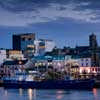
Wexford Opera House Photo : Ros Kavanagh
DESIGN CONCEPT
Close up, the new building has retained the extraordinary element of surprise and secrecy so characteristic of the old Theatre Royal, by re-integrating itself into the historic fabric of Wexford’s medieval centre, behind reinstated terraced buildings. The scale of the Wexford Opera House building and its contribution to Wexford’s silhouette only becomes truly apparent when the project is viewed from the banks of the River Slaney. From there the new flytower appears in the skyline alongside the spires of Wexford’s two Pugin inspired churches and the Italianate tower of the Franciscan Friary, announcing the presence of an exceptional new cultural building in the historic townscape.
Internally the main auditorium, inspired both by the form of a cello and the curves of a traditional horseshoe-form operatic space, has been lined in black American walnut whilst the seating has been finished in pale purple leather giving a rich sense of material quality to its contemporary design.
Though primarily conceived for the autumn opera festival, the new Wexford Opera House building is intended to operate as a year round arts venue, for both additional Wexford Festival productions and visiting companies.
CONSTRUCTION CONSTRAINTS
The site limitations could seldom have been more complex. Access to the site was extremely limited and all vehicle traffic, including 40 tonne articulated vehicles, had to negotiate Wexford’s tight Medieval street pattern. The sloping site was founded on bedrock which had to be excavated to allow formation of the stage undercroft, orchestra pit and lower ground levels.
The Wexford Opera House site sits in the centre of an urban block, and could only be accessed from one point. Construction programming and logistics were as a consequence particularly difficult. The street width limitations meant that long span structures such as trusses above the auditorium and the flytower could only be designed and delivered in small sections and site assembled to achieve the required component size. The highly complex steel frame, including curved fronted auditorium balconies, was assembled in 6 phases working out from the most landlocked corner of the site (Phase1) to the most accessible sector (Phase 6).
MATERIALS & CONSTRUCTION
The materials selected for the project take account of the colours and textures of Wexford’s indigenous architecture, and its maritime location.
Materials
Externally, the most visible element of the Wexford Opera House building is the fly-tower, and this is clad in copper, a material associated in Irish towns and cities with civic buildings.
In this case, the copper has a pre-oxidised finish. Its shape is morphed from the expected rectilinear constraints to a more open, exuberant shape evoking the creative activities occurring within.
Internally, the highlight is the American Black Walnut lining of the Auditorium. It is sourced from managed forests in Canada, spentds four months drying out, and is was fixed in the building some six months after felling.
The lining of the walls, floors and ceilings of the auditorium amounts to about 3,500 sq.m. or half the size of a football pitch.
The form of the auditorium balcony fronts is complex and in places triple curved requiring exceptional standards of workmanship for its effective realisation.
CONTRACT FORM
GDLA 82 with Quantities
PROGRAMME
Design Jul 2003 – Jun 2006
Construction Jul 2006 – Aug 2008
Despite the enormous complexity of the task, the Wexford Opera House design team and the contractors delivered the project on schedule for the autumn 2008 Wexford Opera Festival.
Wexford Opera House – Designers
OPW ARCHITECTS & KEITH WILLIAMS ARCHITECTS : A SUMMARY PROFILE
OPW ARCHITECTS
Pat Cooney, Principal Architect
Klaus Unger, Assistant principal Architect
Ciar·n McGahon, Senior Architect and project Architect for Wexford Opera House
The Office of Public Works Architectural Services Division is the State architectural practice, and provides the full range of architectural services in connection with the portfolio of existing State property holdings, historic and contemporary, and with new construction projects, both directly for the State and for bodies promoted or assisted by the State, as in this case, the new Wexford Opera House. The Division is one of the largest architectural practices in the country, and currently processes about half of the workload itself, whilst placing half with architectural firms in private practice.
It is an integral element in the construction industry in Ireland, and committed to the support and development of architectural practice in the country, as witnessed by its Graduate Training Programme, run in conjunction with the RIAI, in which 30 young graduates are now participating. Klaus Unger, together with his five Assistant Principal Architects colleagues, each head one of the six subdivisions of the practice.
Klaus’s work over the past decades has involved the major institutions of the State; The National Concert Hall, Government Buildings, The National Gallery, The National Library, The National Conference Centre, The Abbey Theatre, inter alia. Ciar·n McGahon, Project Architect for the Wexford Opera House, has been involved in a variety of building types for the OPW over the years; he was project architect for the DÛchas Centre, the city-centre facility which replaced the old women’s prison in Dublin – a complex, innovative and humane solution to a timeless social necessity, completed in 1999.
In recent years he has been providing architectural input into the procurement of major State assets through the new procurement methodologies: the National Stadium, Aquatic Centre, Lansdowne Road Stadium, National Gallery, Conference Centre, Concert Hall and Abbey Theatre.
Wexford Opera House images / information from Keith Williams Architects 120908
Keith Williams Architects, London, England
Location: Wexford Opera House, Ireland
Irish Architecture Designs
Contemporary Architecture in Ireland
Irish Architectural Designs – chronological list
House at Bogwest in Ireland, County Wexford
Design: Steve Larkin Architects
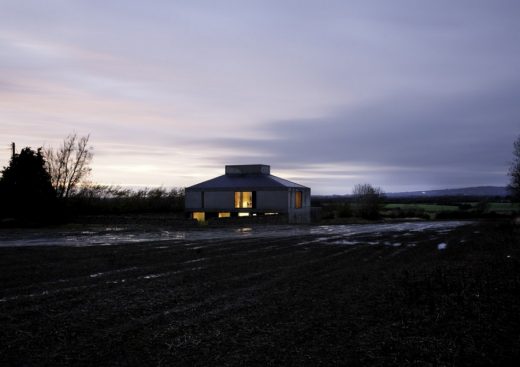
photo : Alice Clancy
House at Bogwest
Irish Architect – design office listings
Buildings by Keith Williams Architects
Athlone Civic Centre + Square, Athlone, Republic of Ireland
Design: Keith Williams Architects
Athlone Art Gallery
RIAI Awards 2009 : Wexford Opera House was Shortlisted
Contemporary Irish Arts Buildings Selection
The Butler Gallery, Kilkenny, County Kilkenny, province of Leinster, South-East Ireland
Design: McCullough Mulvin Architects
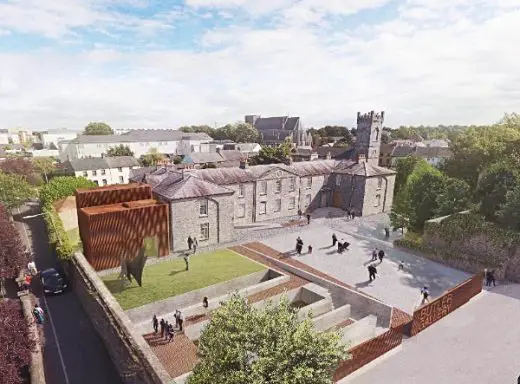
image © McCullough Mulvin Architects
Butler Gallery Building in Kilkenny
Comments / photos for the Wexford Opera House Architecture page welcome


